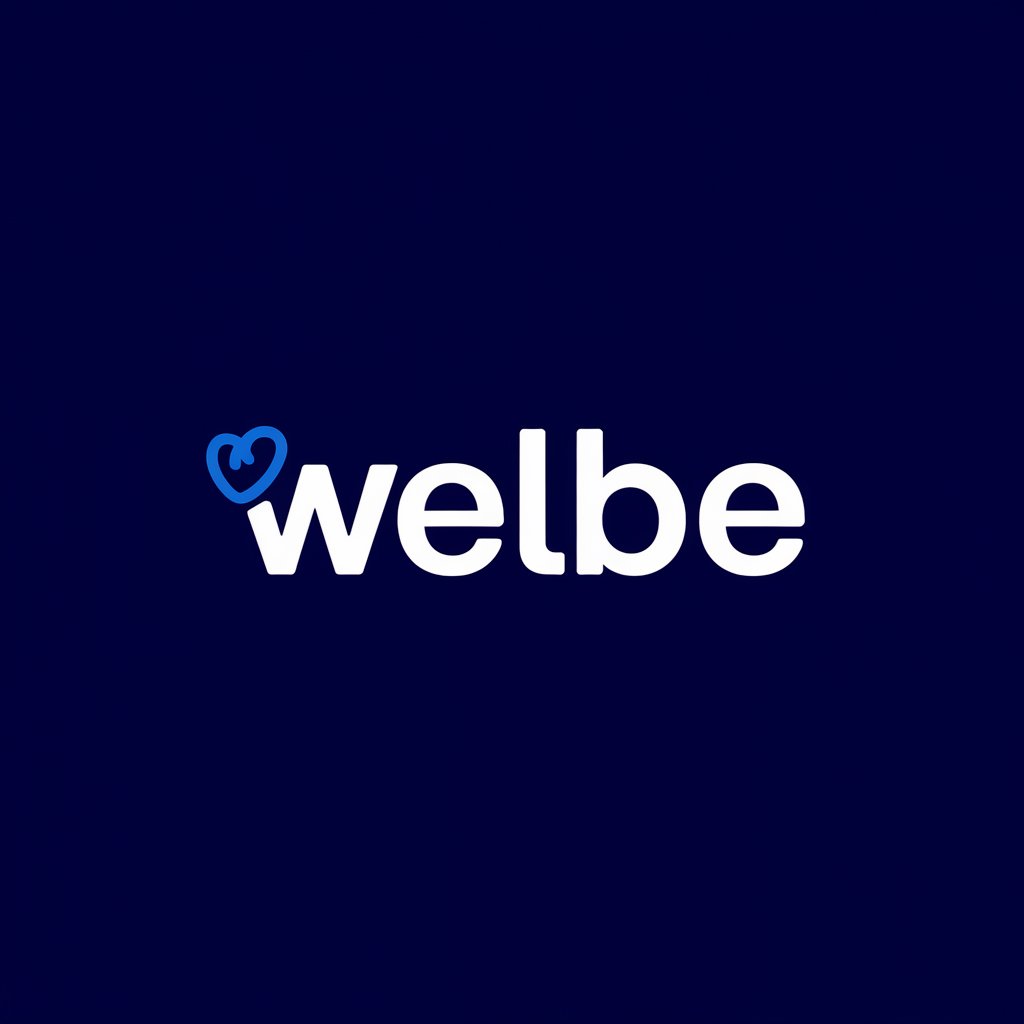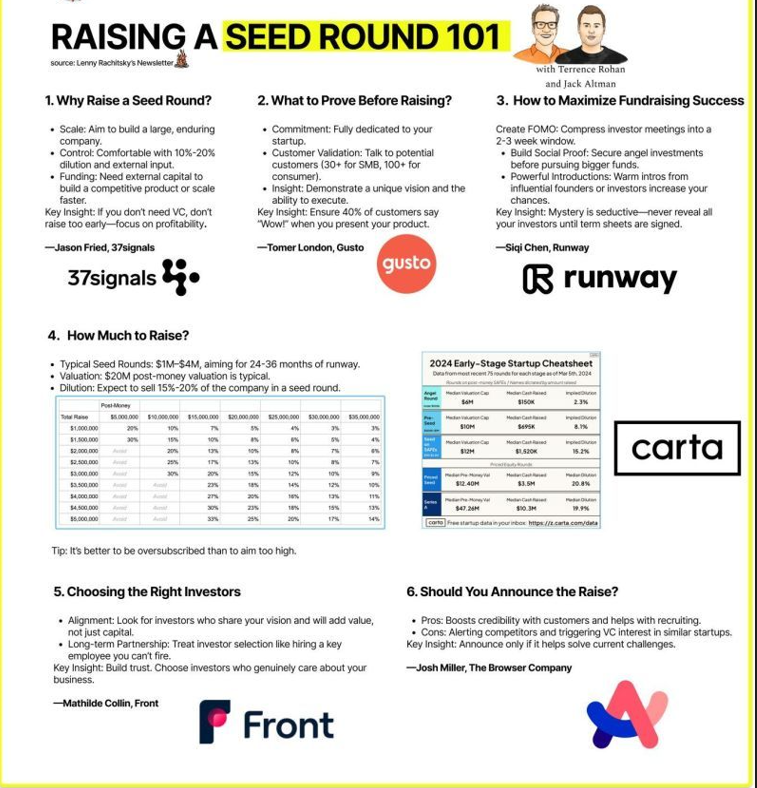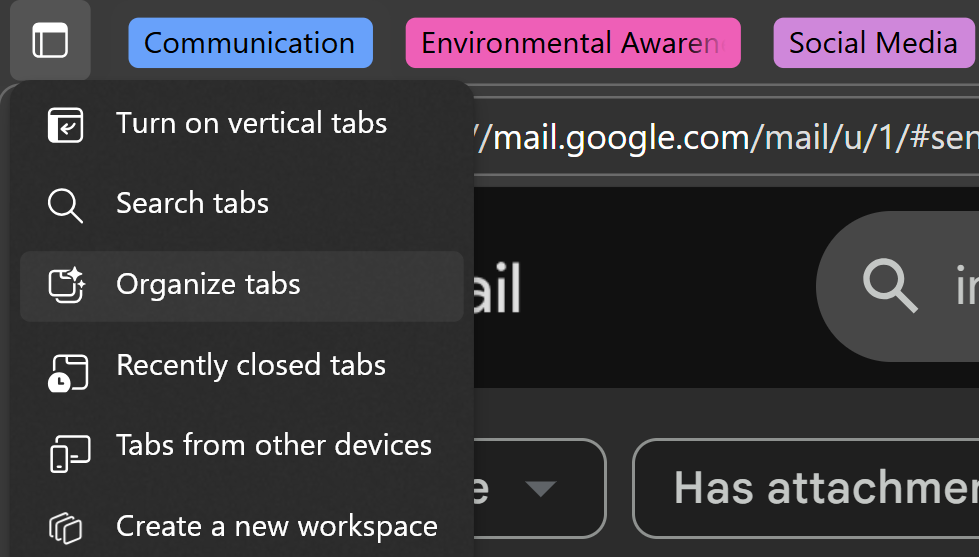Back
Vikas Acharya
•

Welbe • 6m
𝗦𝘁𝗮𝗿𝘁𝘂𝗽 𝗹𝗮𝘂𝗻𝗰𝗵𝗽𝗮𝗱 𝗘𝗽-𝟯 𝗙𝘂𝗻𝗱𝗿𝗮𝗶𝘀𝗶𝗻𝗴 𝗢𝘃𝗲𝗿𝘃𝗶𝗲𝘄💶 𝟭. 𝗙𝘂𝗻𝗱𝗿𝗮𝗶𝘀𝗶𝗻𝗴 𝗢𝘃𝗲𝗿𝘃𝗶𝗲𝘄 The Fundraising section covers everything you need to successfully raise capital 1.Strategy & structuring your round 2.Crafting pitch decks 3.Building an optimized data room 4.Understanding term sheets 5.Alternative financing routes 6.Running post-close investor updates 🧠 𝟮. 𝗠𝗶𝗻𝗱𝘀𝗲𝘁 & 𝗦𝘁𝗿𝗮𝘁𝗲𝗴𝘆 Treat fundraising not just as raising money, but as hiring a long-term partner—one who will sit on your board and shape your startup’s future Begin early: build relationships with investors well ahead of your raise; ongoing updates help maintain visibility Define your ideal investor profile: think about stage fit, network depth, follow-on policies, and mindset 🔄 The Outreach Process Start with second-tier investors — polish your pitch through early feedback Leverage intros — warm intros from existing investors or founder peers Activate your board — engage them for intros and tactical support Run a tight schedule — aim for ~5–10 meetings weekly early in the process Signal momentum — use inbound interest and funnel progress strategically Follow up smartly — assertive but not desperate; contextualize with new data Use references well — prep happy customers and ask for VC references from leads Do your own due diligence — vet investors through their current portfolio Close fast on term sheets — convene your board quickly and treat term sheet timelines seriously Negotiate structure — coordinate with lead investors on allocations, check oversubscription dynamics Support due diligence — stay responsive to expedite the process Seal the deal — negotiate contracts, finalize, and receive funds 🎯 𝟯. 𝗣𝗶𝘁𝗰𝗵 𝗗𝗲𝗰𝗸 𝗘𝘀𝘀𝗲𝗻𝘁𝗶𝗮𝗹𝘀 Create two decks: Intro deck (10–15 slides) for initial outreach Full deck (up to 40–50 slides) for in-depth follow-ups Keep the intro deck concise—VCs typically spend only ~2–3 minutes reviewing Standard slide structure: Title/purpose Problem Solution Market Why now? Business model Go‑to‑market Competition Team Financials & traction The raise ask Design standards: PDF format, clean professional visuals, minimal text per slide 🗂️ 𝟰. 𝗗𝗮𝘁𝗮 𝗥𝗼𝗼𝗺 & 𝗦𝘂𝗽𝗽𝗼𝗿𝘁𝗶𝗻𝗴 𝗠𝗮𝘁𝗲𝗿𝗶𝗮𝗹𝘀 🔑 Essentials Short & long pitch decks Financial model (2–5 year outlook, CAC/LTV, unit economics) Updated cap table (tools like Ledgy recommended) Sales funnel metrics or B2B pipeline snapshot 🚀 Strongly Recommended Product demo video (5–15 min) Investor FAQ sheet Product roadmap Competitive analysis Customer personas Org chart and hiring plan Organize documents in a clean virtual data room (Notion, GDrive, Docsend) for fast and easy investor access Consult legal support early to ensure smooth document flow 📈 𝟱. 𝗔𝗳𝘁𝗲𝗿 𝘁𝗵𝗲 𝗥𝗮𝗶𝘀𝗲: 𝗜𝗻𝘃𝗲𝘀𝘁𝗼𝗿 𝗨𝗽𝗱𝗮𝘁𝗲𝘀 Provide monthly updates that are concise but informative Use tools like Ledgy for clear, visual KPI dashboards and equity reporting ✅ TL;DR: Your Fundraising Playbook Approach fundraising as partnership-building Prepare well: decks, model, caps, data room Start with feedback-focused outreach Run processes tightly & transparently Use momentum to drive conversion Close wisely and deliver consistent updates Fundraising isn’t about chasing checks — it’s about choosing partners for the long game. The best founders don’t just raise capital. They raise confidence, clarity, and a killer narrative !

More like this
Recommendations from Medial
Tarun Suthar
CA Inter | CS Execut... • 4m
I have compiled all publicly available investor lists, YC founders lists, pitch deck collections, and other valuable fundraising resources available on the internet into one place. ✨️🚀 I will keep updating the folder with more stuff. This includes
See More
Vivek Joshi
Director & CEO @ Exc... • 5m
Level Up Your VC Fundraising with Consulting Pros 🚀 Cold outreach for VC funds? You're likely missing out! Partnering with a specialized consulting firm can transform your fundraising journey. Here's why they're essential: * Warm Introductions: For
See More
Vivek Joshi
Director & CEO @ Exc... • 27d
VC Outreach: Ditch the Cold, Go for the Warm! Founders, tired of your pitch getting lost in the noise? While cold emails and online forms seem easy, they're often a black hole for VC outreach. The truth? Warm introductions are your secret weapon for
See More
Vikas Acharya
Building WelBe| Entr... • 10m
Do You Really Need Investors? Maybe Not! Fundraising vs. Bootstrapping – What’s Right for You? Bootstrapping (Pros & Cons) ✅ Full control ✅ No pressure from investors ❌ Slower growth Example: Mailchimp, Zoho, Basecamp – all built without investors
See MoreThomas D
I discuss funding st... • 9m
Less than 1% of companies secure venture capital 💔—and even among those that do, many struggle to raise a second round. After reading Lenny Rachitsky’s latest article on raising Seed rounds, I wanted to distill the most valuable insights from top f
See More
Download the medial app to read full posts, comements and news.



































